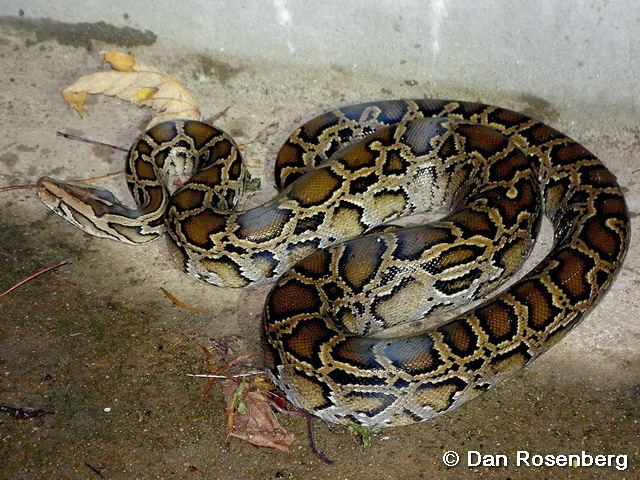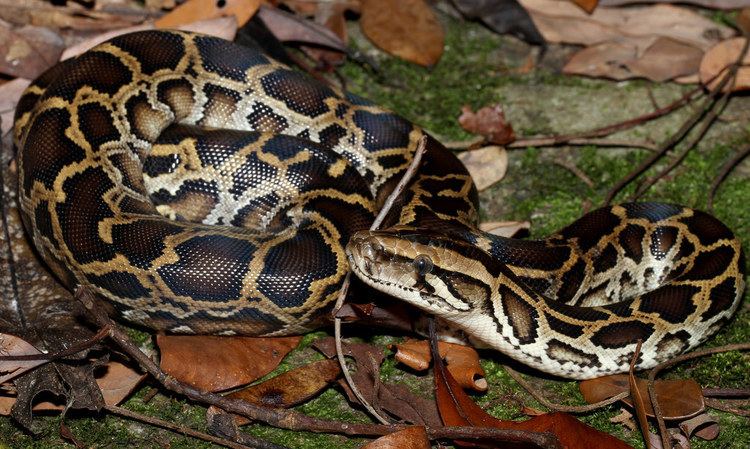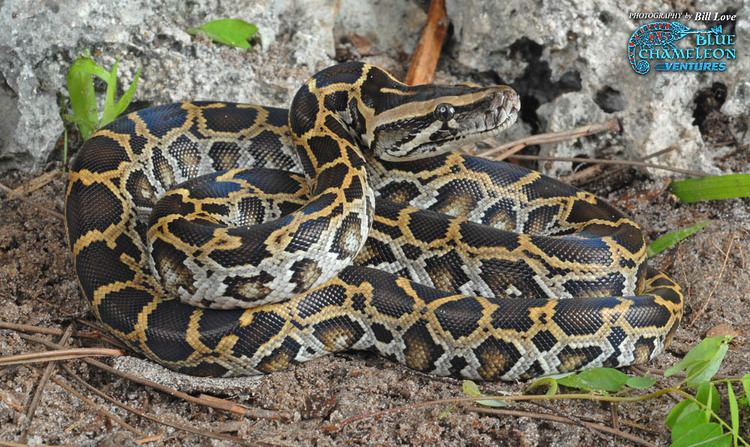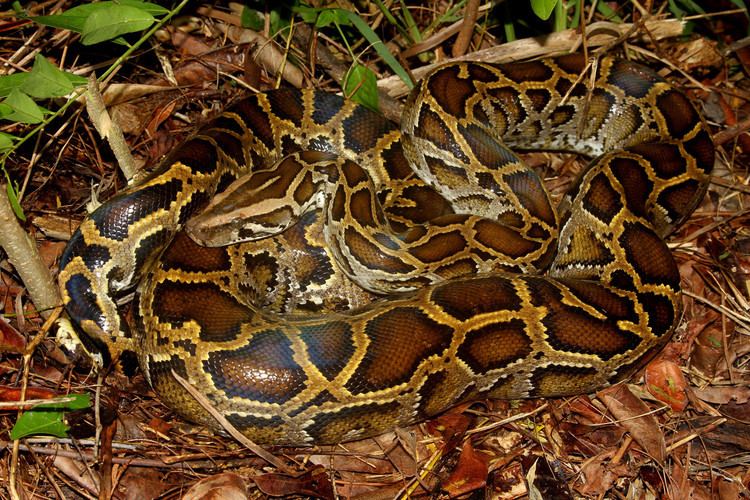Kingdom Animalia Subphylum Vertebrata Suborder Serpentes Scientific name Python molurus Rank Species | Phylum Chordata Order Squamata Genus Python Higher classification Python | |
 | ||
Similar Snake, Python family, Python, Burmese python, Reptile | ||
Albino paradox burmese python molurus bivittatus tigerpython by www dn reptiles de
Python molurus is a large nonvenomous python species found in many tropic and subtropic areas of the Indian Subcontinent and Southeast Asia. It is known by the common names Indian python, black-tailed python and Indian rock python. The species is limited to Southern Asia. It is generally lighter colored than the Burmese python and reaches usually 3 metres (9.8 ft).
Contents
- Albino paradox burmese python molurus bivittatus tigerpython by www dn reptiles de
- Python molurus
- Common names
- Description
- Geographic range
- Habitat
- Behavior
- Feeding
- Reproduction
- Conservation status
- Taxonomy
- In culture
- References

Python molurus
Common names

Indian python, black-tailed python, Indian rock python, Asian rock python. Referred to as "Ajingar" in Nepali,"Ajgar" in Hindi and Marathi,"Ajagara" in Odiya, "Azdaha" in Urdu and "অজগর (Awjogor)", "মেঘডম্বুর (Meghdombur)" & "মেগডুম (Megdum)" in Bengali, Malai pambhu (மலைப் பாம்பு) in tamil. In Sri Lanka the species is commonly referred to as "Pimbura-පිඹුරා" in Sinhala. The subspecies Python molurus pimbura was thought to have stemmed from the alias given in Sri Lanka, however the pimbura, or Ceylonese Python is no longer considered a valid subspecies or locality and are known and registered as the same animal.
Description

The color pattern is whitish or yellowish with the blotched patterns varying from shades of tan to dark brown. This varies with terrain and habitat. Specimens from the hill forests of Western Ghats and Assam are darker, while those from the Deccan Plateau and East Coast are usually lighter.

In India, the nominate subspecies grows to 3 metres (9.8 ft) on average This value is supported by a 1990 study in Keoladeo National Park, where the biggest 25% of the python population was 2.7–3.3 metres (8.9–10.8 ft) long. Only two specimen even measured nearly 3.6 metres (11.8 ft). Because of confusion with the Burmese python, exaggerations and stretched skins in the past, the maximum length of this subspecies is hard to tell. The longest scientifically recorded specimen, which hailed from Pakistan, was 4.6 metres (15.1 ft) in length and weighed 52 kilograms (115 lb). In Pakistan, Indian Pythons commonly reach a length of 2.4–3 metres (7.9–9.8 ft).
Geographic range

The nominate subspecies is found in India, southern Nepal, Pakistan, Sri Lanka, Bhutan, Bangladesh and probably in the north of Myanmar.
Habitat

Occurs in a wide range of habitats, including grasslands, swamps, marshes, rocky foothills, woodlands, "open" jungle and river valleys. They depend on a permanent source of water. Sometimes they can be found in abandoned mammal burrows, hollow trees, dense water reeds and mangrove thickets.
Behavior
Lethargic and slow moving even in its native habitat, they exhibit timidity and rarely try to attack even when attacked. Locomotion is usually rectilinear, with the body moving in a straight line. They are excellent swimmers and are quite at home in water. They can be wholly submerged in water for many minutes if necessary, but usually prefer to remain near the bank.
Feeding
Like all snakes, Indian pythons are strict carnivores and feed on mammals, birds and reptiles indiscriminately, but seem to prefer mammals. Roused to activity on sighting prey, the snake will advance with a quivering tail and lunge with an open mouth. Live prey is constricted and killed. One or two coils are used to hold it in a tight grip. The prey, unable to breathe, succumbs and is subsequently swallowed head first. After a heavy meal, they are disinclined to move. If forced to, hard parts of the meal may tear through the body. Therefore, if disturbed, some specimens will disgorge their meal in order to escape from potential predators. After a heavy meal, an individual may fast for weeks, the longest recorded duration being 2 years. The python can swallow prey bigger than its diameter because the jaw bones are not connected. Moreover, prey cannot escape from its mouth because of the arrangement of the teeth (which are reverse saw-like).
Reproduction
Oviparous, up to 100 eggs are laid by the animal, which are protected and incubated by the female. Towards this end, it has been shown that they are capable of raising their body temperature above the ambient level through muscular contractions. The hatchlings are 45–60 cm (18–24 in) in length and grow quickly. An artificial incubation method using climate-controlled environmental chambers was developed in India for successfully raising hatchlings from abandoned or un-attended eggs
Conservation status
The Indian Python is classified as Lower Risk/Near Threatened on the IUCN Red List of Threatened Species (v2.3, 1996). This listing indicates that it may become threatened with extinction and is in need of frequent reassessment.
Taxonomy
In the literature, one other subspecies may be encountered: P. m. pimbura Deraniyagala, 1945, which is found in Sri Lanka.
The Burmese python (Python bivittatus) was referred to as a subspecies of the Indian python until 2009, when it was elevated to full species status. The name Python molurus bivittatus is found in older literature.
In culture
Kaa, a large and elderly Indian python is featured in The Jungle Book.
